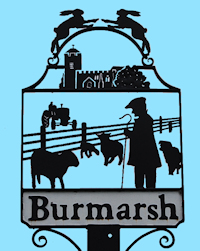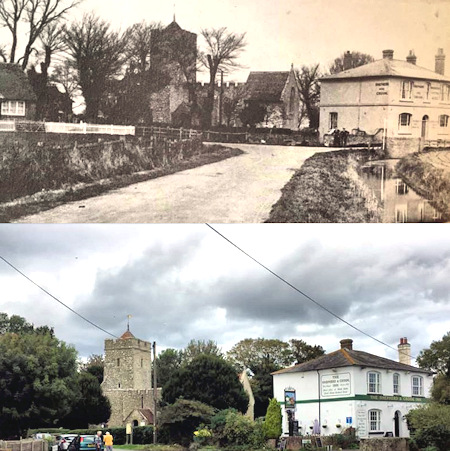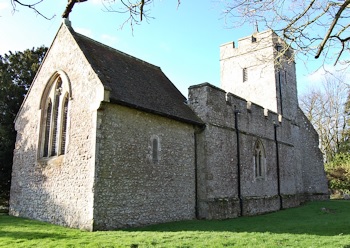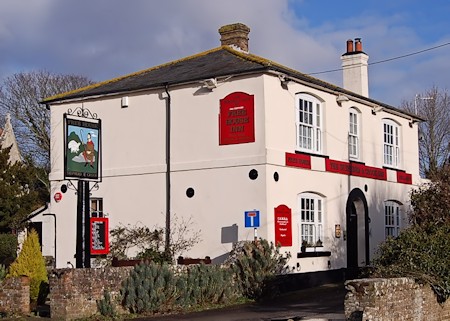Burmarsh


The name Burmarsh originates from marshland belonging to the burghers or citizens of Canterbury. Adjacent to the Royal Military Canal, Burmarsh has for centuries been involved with sherpherding and wool and smuggling.
The small 13th All Saints Church, reached by a footbridge over a stream, is mainly Norman, though the chancel may have been a Saxon chapel. The other landmark is the Shepherd and Crook, a 16th century inn next to the church. Its name may have a religious reference, or may simply refer to the sheep trade, the source of the Marsh's prosperity.
The pub, a free house, has two bars and an attractive beer garden. Its landlord, a former wartime aircrew officer, has decorated the interior with RAF memorabilia. There is wide-ranging collection of items, such as signed photographs of politicians and royalty, as well as a pair of Queen Victoria's stockings.
As in many small villages, the pub plays a pivotal role in the local community, and is home to the Burmarsh Cricket Club, which meets regularly. Visitors can also enjoy: Lathe Barn, which offers tea rooms and restaurant; a childrens farm; gift and craft shops, and Haguelands Village, with fun for the whole family, including Kent's largest Maize Maze.

Burmarsh c1912 & 2019
Burmarsh comes from the Old English ‘burh-ware’ meaning ‘town dwellers’ with ‘mersc’ being a ‘marsh’; therefore, ‘marsh of the town dwellers’. The Domesday Book records Burmarsh as Borchemeres and Burwarmaresc.
Burmarsh is one of the earliest known Romney Marsh settlements. In c AD275, the Romans obtained salt from the area for use of their Empire. St Augustine's Priory at Canterbury held the manor of Burmarsh prior to 1066.

In 1799, the author Edward Hasted wrote:
"In the reign of king Ethelwolf, about the year 848, Edbald his grandson, for the sum of four thousand pence, gave this manor to his friend Wynemund, who again gave it, with the land of Wyk, to the monastery of St. Augustine, as free as his lord had given it to him, where he had chosen for himself a place of sepulture. After which it remained part of the possessions of the monastery, and accordingly it is thus entered in the record of Domesday, under the general title of the land of the church of St. Augustine"




















